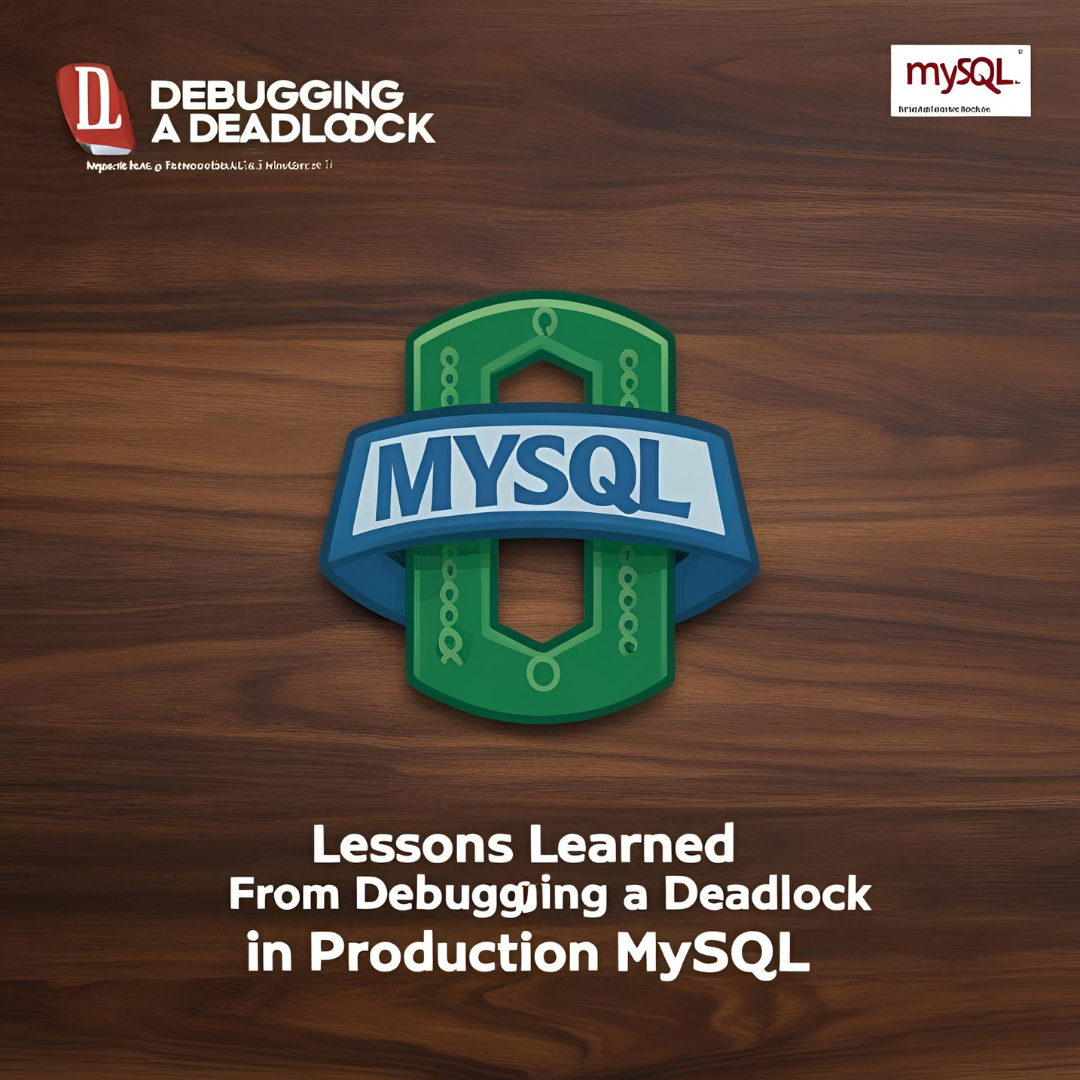Few situations strike more fear into a database administrator’s heart than a production deadlock. When your high-traffic e-commerce site suddenly grinds to a halt or your application’s response time spikes during peak hours, chances are you’re facing a database deadlock. After resolving numerous MySQL deadlocks over the years, I’d like to share some hard-earned lessons from a particularly challenging case.
The Incident: Black Friday Breakdown
It was Black Friday, and our e-commerce platform was handling 3x the normal traffic when alerts started flooding in. Database connections were piling up, response times increased to unacceptable levels, and some transactions began timing out. The symptoms were classic: our MySQL database had deadlocked.
Initial investigation showed hundreds of transactions in the “waiting for lock” state. We were facing a full-blown deadlock scenario during the most critical business day of the year.
Lesson 1: Understand MySQL’s Deadlock Detection
MySQL has built-in deadlock detection, but it’s essential to know how to access and interpret this information. The first command we ran was:
SHOW ENGINE INNODB STATUS;
This revealed the latest deadlock in the “LATEST DETECTED DEADLOCK” section. A critical finding was two transactions waiting on locks for the same rows but in reverse order:
- Transaction 1: Had lock on
order_itemstable and was waiting for lock oninventorytable - Transaction 2: Had lock on
inventorytable and was waiting for lock onorder_itemstable
Neither transaction could proceed because each was waiting for a resource the other held.
Lesson 2: Transaction Logs Are Worth Their Weight in Gold
Enabling detailed transaction logging before an incident occurs is invaluable. In our case, we had fortunately enabled:
SET GLOBAL innodb_print_all_deadlocks = ON;
This setting logged all deadlocks to the MySQL error log, not just the most recent one. By analyzing the logs, we discovered a pattern: deadlocks consistently occurred during inventory updates that coincided with order processing.
Lesson 3: Visualize Lock Interactions
Understanding complex lock interactions is difficult without visualization. We created a directed graph representing transactions (nodes) and their lock requests (edges). This visual representation immediately highlighted circular dependencies in our transaction patterns.
The visualization revealed multiple entry points into the same critical section, with inconsistent lock acquisition orders across different code paths.
Lesson 4: Consistent Lock Ordering is Critical
The root cause became clear: our application was accessing tables in different orders depending on the code path:
- The checkout process locked
order_itemsfirst, theninventory - The inventory management process locked
inventoryfirst, thenorder_items
The solution was implementing consistent lock ordering across all code paths, ensuring tables were always locked in the same sequence (alphabetically, in our case).
Lesson 5: Reduce Lock Duration and Scope
While investigating, we discovered several issues that exacerbated the deadlock problem:
- Unnecessarily large transactions encompassing multiple operations
- Business logic being performed while holding database locks
- SELECT statements not using the appropriate isolation level
We refactored our code to:
- Break large transactions into smaller ones
- Move business logic outside of transactions where possible
- Use
SELECT ... FOR UPDATEonly when absolutely necessary - Add appropriate timeouts to prevent indefinite waiting
Lesson 6: Connection Pooling Configuration Matters
Our connection pool was configured to maintain too many connections, which increased the likelihood of deadlocks during peak times. We adjusted the connection pool settings to:
- Reduce the maximum pool size
- Implement a fair scheduling algorithm
- Add a connection request timeout
Lesson 7: Monitoring and Alerting Before Crisis
After resolving the immediate issue, we realized our monitoring was inadequate. We implemented:
- Proactive monitoring for lock wait times and deadlock events
- Alerts for transactions holding locks longer than a threshold
- Regular reporting on transaction patterns and potential deadlock scenarios
Aftermath and Results
After implementing these changes, we conducted load testing that simulated 5x our Black Friday traffic. The system remained stable with no deadlocks. The real test came during the next major sale event, where we processed 30% more orders than the previous Black Friday without a single deadlock or performance issue.
Key Takeaways for MySQL Deadlock Prevention
- Design for Consistency: Ensure all transactions acquire locks in the same order
- Keep Transactions Small: Minimize the duration and scope of your transactions
- Choose Appropriate Isolation Levels: Don’t use higher isolation than necessary
- Monitor Proactively: Detect potential deadlocks before they impact users
- Document Lock Patterns: Create clear documentation of expected lock acquisition patterns
- Test Under Load: Simulate high concurrency to expose potential deadlock scenarios
Deadlocks in production are stressful but provide valuable learning opportunities. By understanding MySQL’s locking mechanisms and following consistent transaction design patterns, you can build robust applications that remain stable even under extreme load.
Remember, most deadlocks aren’t random occurrences—they’re predictable consequences of transaction design decisions. With the right approach, you can eliminate them entirely from your production environment.


Leave a Reply